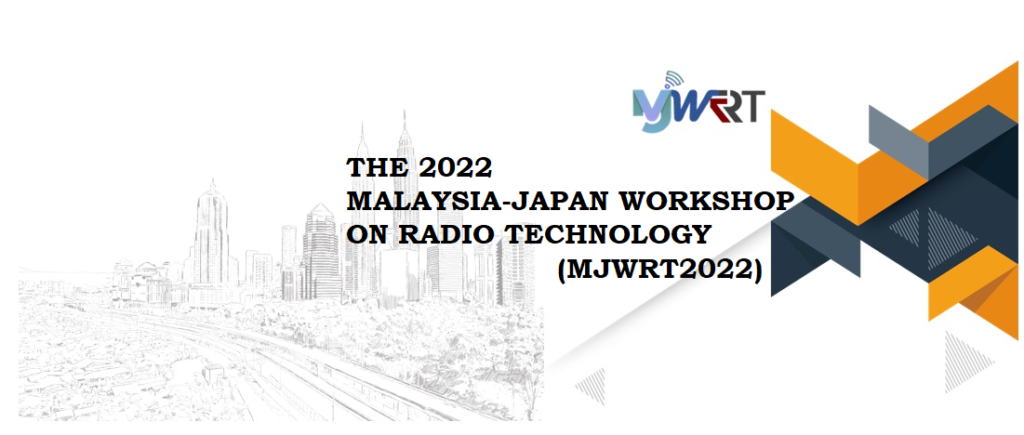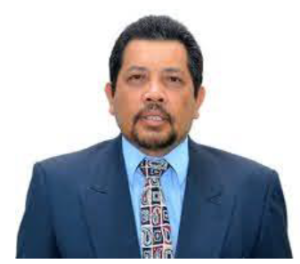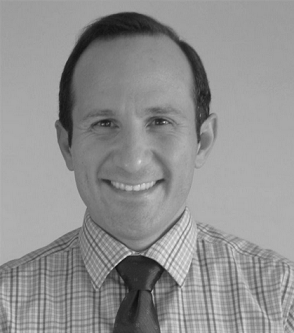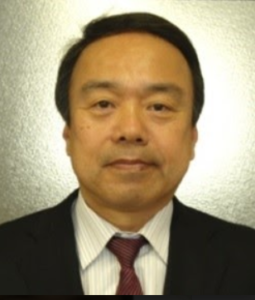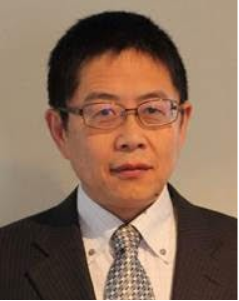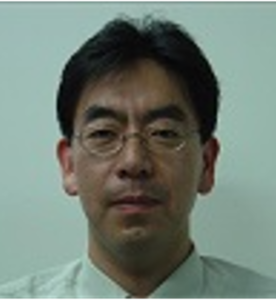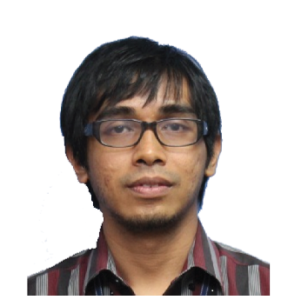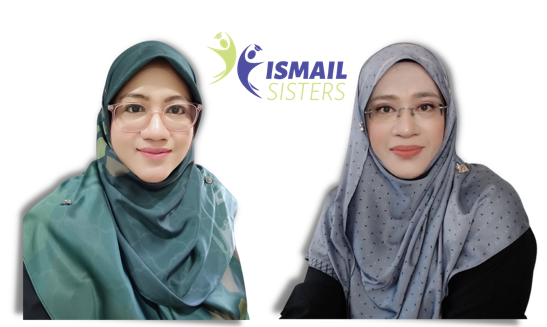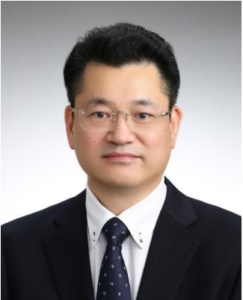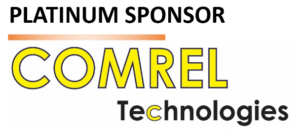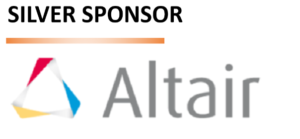Antenna with Electromagnetic Band Gap Structure (EBG) for Wireless ApplicationProf. Ts. Dr. Mohamad Kamal A RahimAdvanced RF & Microwave Research Group
School of Electrical Engineering
Universiti Teknologi Malaysia, 81310
UTM JB Johor, Malaysia
Abstract:This keynote presents the use of electromagnetic bandgap (EBG) structure for frequency and pattern reconfigurable. The first structure is the pattern and polarization reconfigurable antenna for beam-steering configurations. The proposed antenna consists of a group of EBG structure to control the pattern reconfigurability. The patterns can be shifted up to +- 25 degree beam shifting through this concept of pattern reconfigurable. The pattern is tilted when the diode is ON and OFF. The diode is used to control the beam shifting of the antenna and also the polarization of the antenna. The antenna also can be changed to linear and circular polarization when the diode is ON and OFF condition at the taper of the antenna. The second application is the used of EBG for band stop rejection where the EBG has been designed to suppress and control the frequency transmission to the antenna. In this concept the UWB antenna has been designed and the EBG structure is used to stop the frequency transmission of the antenna. The EBG has been designed at different sizes where it represents the different frequency that can be stop from propagating the signal through it. The results show that at certain EBG structure the signal transmission has been stop from propagating to the UWB antenna and no radiation at that particular frequency. The third application of EBG is to suppress within dual band antenna where the suitable EBG will be incorporated with the dual band antenna and one of the frequency has been suppressed and the radiation pattern of the other frequency has been improved.
PROF. DR. MOHAMAD KAMAL A RAHIM received the B Eng. degree in Electrical and Electronic Engineering from the University of Strathclyde, UK, in 1987. From 1987 to 1989, he worked as a Management Trainee at Sime Tyres Mergong Alor Star Kedah and Production Supervisor at Sime Shoes in Kulim Kedah. In 1989, he joined the Department of Communication Engineering, Faculty of Electrical Engineering Universiti Teknologi Malaysia Kuala Lumpur as an Assistant Lecturer A. He obtained his M.Eng Science from the University of New South Wales Australia in 1992 and Ph.D. degree in Electrical Engineering from the University of Birmingham UK in 2003. After he received his Master’s he was appointed as a Lecturer at the Faculty of Electrical Engineering. In 2005 he was appointed as a senior lecturer and in 2007 he was appointed as Assoc. Professor at the faculty. Now he is a full Professor in RF and Antenna at the School of Electrical Engineering Faculty of Engineering, Universiti Teknologi Malaysia. His research interest includes the areas of design of Dielectric resonator antennas, microstrip antennas, small antennas, microwave sensors, RFID antennas for readers and tags, Multi-function antennas, microwave circuits, EBG, artificial magnetic conductors, metamaterials, phased array antennas, computer-aided design for antennas and design of millimeter frequency antennas. He has published over 500 articles in journals and conference papers. He received various award in international and national exhibition. In 2019 he received the award for Distinguish Researcher from UTM and Top Research Scientist from Academy Science of Malaysia. He supervised and graduated over 30 Phd students and 50 Master students by research.
A Guide to 5G Product Design, Wave Propagation Modeling and Radio Network PlanningDr. Mahan RuddTechnical Specialist (Altair Engineering),
Altair Engineering Sdn Bhd Plaza Sentral, 50470, Kuala Lumpur
Abstract:The rollout of 5G communication networks promises to be a boon for telecommunications companies and the manufacturing industry globally. Faster speeds will result in higher data rates for users, perhaps as much as ten times higher than 4G capabilities, using the 3.5 GHz frequency bands for area-wide services and the 26-28 GHz bands for high data rate hotspots. Improved connectivity will enable more connections at once, as many as one million per square kilometer, according to some estimates. Improved connection speeds also open the doors for smart factory initiatives as companies evolve to Industry 4.0 practices. How will antenna manufacturers, wireless equipment manufacturers, automobile manufacturers and suppliers, and wireless operators rise to meet these challenges? In this presentation, we’ll investigate the various electromagnetic and network planning simulation solutions Altair offers.
DR. MAHAN RUDD has got his Master’s degree in telecommunication in 2009 and has been involved in high-frequency measurement and simulation since that time. He worked as a senior engineer at different test facilities from 2009-2017 performing EMC, EMR, SAR, Radio tests according to various Australian and international standards and developing compliance plans. Mahan joined Altair engineering in 2017 to focus on EM modeling and simulation using Altair EM tools, FEKO and WinProp. His current role at Altair is Technical Specialist and he provides consultancy and support services to the users in ANZ and ASEAN region. His area of interest includes electromagnetic compatibility, antenna design/placement, microstrip structures, carbon fiber for high frequency applications and biological effects of EM waves. He has been part of the antenna research group at Royal Melbourne Institute of Technology (RMIT) since 2015 where he finished his PhD.
Antenna Design Using Folded StructureProf. Dr. Hisashi MorishitaTohoku University, Japan
PROF. DR. HISASHI MORISHITA received the B.S. degree from National Defense Academy of Japan in 1980, the M.S. and Dr. Eng. Degrees from University of Tsukuba in 1987 and 1980, respectively. From 1990 to 1992, he worked as a research and development officer of JASDF. Since 1992, he has been with National Defense Academy and is currently a Professor in the Department of Electrical and Electronic Engineering. He was a Chair of the IEEE AP-S Japan Chapter from 2007 to 2008. His research is concerned with mobile communications and small antennas, on which he has published many papers in various major technical journals. Dr. Morishita is a Fellow of IEICE and a Senior Member of IEEE.
Gradient Index Lens Using Perforated DielectricProf. Dr. Qiang ChenNational Defense Academy, Japan
Abstract:Gradient index (GRIN) lens has attracted significant interest for its attractive properties, such as broadband, high gain and competitive efficiency at the band of millimeter wave. In this talk, researches on the so-called hyperbolic secant (H-S) lens antennas are introduced, which show a good performance of high gain, broadband and high-resolution imaging characteristics. The experimental results demonstrate the potential applications in the millimeter-wave wireless communications and near-distance imaging
PROF. DR. QIANG CHEN received the B.E. degree from Xidian University, Xi’an, China, in 1986, the M.E. and D.E. degrees from Tohoku University, Sendai, Japan, in 1991 and 1994, respectively. He is currently Chair Professor of Electromagnetic Engineering Laboratory with the Department of Communications Engineering, Faculty of Engineering, Tohoku University. His primary research interests include antennas, microwave and millimeter wave, electromagnetic measurement and computational electromagnetics.
He received the Best Paper Award and Zen-ichi Kiyasu Award from the Institute of Electronics, Information and Communication Engineers (IEICE). He served as the Chair of IEICE Technical Committee on Photonics-applied Electromagnetic Measurement from 2012 to 2014, the Chair of IEICE Technical Committee on Wireless Power Transfer from 2016 to 2018, the Chair of IEEE Antennas and Propagation Society Tokyo Chapter from 2017 to 2018, the Chair of IEICE Technical Committee on Antennas and Propagation from 2019 to 2021. IEICE Fellow.
Antenna Near Field Measurement System Using an Optical Fiber Link System and Industrial RobotDr. Satoru KurokawaNational Institute of Advanced Industrial Science and Technology, Japan
Abstract:In this paper, we show our developed optical fiber link antenna measurement system using zero-biased optical reflection-type electro absorptive modulators (EAM), or an 850 nm multi-mode VCSEL (Vertical cavity surface emitting laser diode). We have developed an antenna near field measurement system that consists of the optical fiber link system, an arm vertical articulated robot that has a 6-axis 1 m length arm, and 4 open-ended waveguide probes. We show a measured near field radiation pattern for WR-28 standard gain horn antenna using our developed system up to 40 GHz.
DR. SATORU KUROKAWA (Member, IEEE) received the B.E. and M.E. degrees in electrical engineering from Chiba University, Chiba, Japan, in 1987 and 1989, respectively, and the Ph.D. degree from the Department of Communication and Computer Engineering, Kyoto University, Kyoto, Japan, in 2002. He has been working as a Senior Researcher with the National Metrology Institute of Japan, National Institute of Advanced Industrial Science and Technology, Ibaraki, Japan, since 2003. He has been the Technical Adviser of 7G aa Company, Ltd., Tsukuba, Japan. His research interests include antenna metrology, radio over fiber technology for antenna measurement, electromagnetic interference measurement, and time-domain measurements. Dr. Kurokawa is an Advisory Committee Member of the IEICE Photonic Applied Electromagnetic Measurement Technical Committee. He was a General Co-Chair of the 2017 IEEE Conference on Antenna Measurements and Applications (2017 IEEE CAMA). From 2019 to 2021, he is a Vice-Chair of the IEICE Antennas and Propagation Technical Committee. He is an International Secretary of IEC TC103.
Underwater Radio using Wideband Signals: Prospect, Challenges and Recent ResearchesAssoc. Prof. Ts. Dr. Idnin Pasya IbrahimMicrowave Research Institute
Universiti Teknologi MARA, 40450
Shah Alam, Selangor, Malaysia
Abstract:Wireless communication systems in underwater environment usually utilize acoustic –based systems. Nevertheless, acoustic systems has limitation in terms of achievable throughput due to limited bandwidth, and sensitive to the changes of propagation medium characteristics. Utilization of electromagnetic waves (EMW) or radio frequency (RF) signal in underwater wireless systems is a potential solution to surpass the throughput limitation, however transmitting RF signal underwater produce large signal attenuation, hence have long deemed impractical. However, EMW signals comprise of huge frequency spectrum which enable utilization of more bandwidth. From the Shannon Limit Theorem, channel capacity will increase by increasing the signal bandwidth, increasing its potential for short range communication. This paper will first outline the challenges of underwater EMW systems, and discusses the general potential of wideband signal utilization. Later on, some results of recent researches that focused on utilization of wideband signal and devices will be discussed, including the work done by the authors of the present paper. Based on the discussion, we highlight the prospects and future direction to realize a high data rate wireless EMW communication underwater.
ASSOC. PROF. TS. DR. IDNIN PASYA IBRAHIM is a Senior Lecturer in the Faculty of Electrical Engineering, Universiti Teknologi MARA. He received the B. E. and M. E. degrees in Information and Communication Engineering from Tokyo Denki University in 2004 and 2006, respectively, and his Ph.D. in Communication Engineering from the same university in 2015. Previously, he worked as an Engineer in Toshiba PC & Network, Tokyo, Japan, from 2006 to 2009, and Pradonet Technology Sdn. Bhd. as Senior Product Engineer in 2009, before joining UiTM in the same year.
He became an active Member of IEEE since 2010, where he contributed to many research publications in the area of antennas and propagation, ultra wideband communication systems and devices, and MIMO radar and its applications. Dr. Idnin received the IEEE MTT Best Paper Award in 2014 IEEE Radio and Wireless Symposium, held in California, USA. He served as the Deputy Director of Microwave Research Institute (MRI), UiTM from 2016-2019. He contributed to IEEE as an executive committee for IEEE AP/MTT/EMC Joint Chapter for the year 2017-2020. He is also an active member of SIRIM Technical Committee on “Electromagnetic Field” (TC/E/6) for the year 2016-2020. Dr. Idnin is currently an executive committee for Malaysia Radar and Navigation (MyRAN) group, where he served as the Head of Radar division for the year 2018-2019.
Ismail Sisters on the Virtue of Identification Utilizing Radio TechnologyProf. Dr. Widad Ismail (1) and Prof. Dr. Alyani Ismail (2)(1) Auto-ID Laboratory (AIDL), School of Electrical and Electronics Engineering, Universiti Sains Malaysia (USM)
(2) Wireless and Photonics Networks Research Centre (WiPNeT), Faculty of Engineering, Universiti Putra Malaysia (UPM)
Abstract:QR-code, barcode, magnetic strip, IC card, Optic Character Recognition (OCR), voice
recognition, fingerprint and optical strip are among the common and well-known identification technologies, but by far, identification utilizing radio technology has been one of the biggest landmarks to identification application. Technology such as Radio Frequency Identification (RFID) that use radio waves to automatically identify living things or objects from a distance of several inches to hundreds of feet had made it a crucial Automatic identification (Auto-ID) in many sectors. Radio-frequency identification (RFID) has come a long way in the past few years, but this exciting technology revolution is perhaps only just beginning to open up more exciting new solutions and applications.
PROF. DR. WIDAD ISMAIL AND PROF. DR. ALYANI ISMAIL, two sisters (Ismail Sisters) will share their experiences, research and knowledge on identification applications utilizing radio technology. Their presentations will include insights on the current and upcoming new RFID applications, the issues in radio technology for identification and the integration with other technologies to produce more virtuous innovative solutions.
Communication Area Expansion Effect by Relay in Polarized MIMO TransmissionProf. Dr. Mitoshi FujimotoFukui University, Japan
Abstract:In Japan, 4K / 8K broadcasting by satellite has been started in December 2018. Satellite broadcasting is suitable for wide-area broadcasting, on the other hand, terrestrial broadcasting is indispensable for realizing 4K / 8K broadcasting that is closely related to the region. However, in terrestrial broadcasting, it is difficult to receive 4K / 8K broadcasting by terrestrial broadcasting due to radio wave shielding, reflection, diffraction, etc. by surrounding buildings.
In this paper, the feasibility of 4K / 8K broadcasting by terrestrial broadcasting is examined. Based on the analysis results of propagation through ray tracing, it is shown that the channel capacity increases by polarization MIMO relay. In addition, the effect of the height distribution of buildings in urban areas on the channel capacity is shown, and the improvement effect by multi-stage MIMO scheme is indicated.
PROF. DR. MITOSHI FUJIMOTO joined the Toyota Central Research & Development Laboratories, Inc. in 1985. He received his M.S. degree in 1991 and a Doctorate in 2000, respectively from Nagoya Institute of Technology, Japan. In 2003, he assumed as an associate professor at the University of Fukui, and is currently a Professor and a Vice Dean in faculty of engineering in the university. His present interest lies in the area of wireless communications, especially adaptive arrays, DOA estimation, and MIMO technology. He is a member of the IEEE, IEICE and ITE. He received the Young Engineer Award from the IEEE AP-S Tokyo chapter in 1992, IEICE Tutorial Paper Award in 2013, IEICE Best Paper Award in 2021, respectively.
